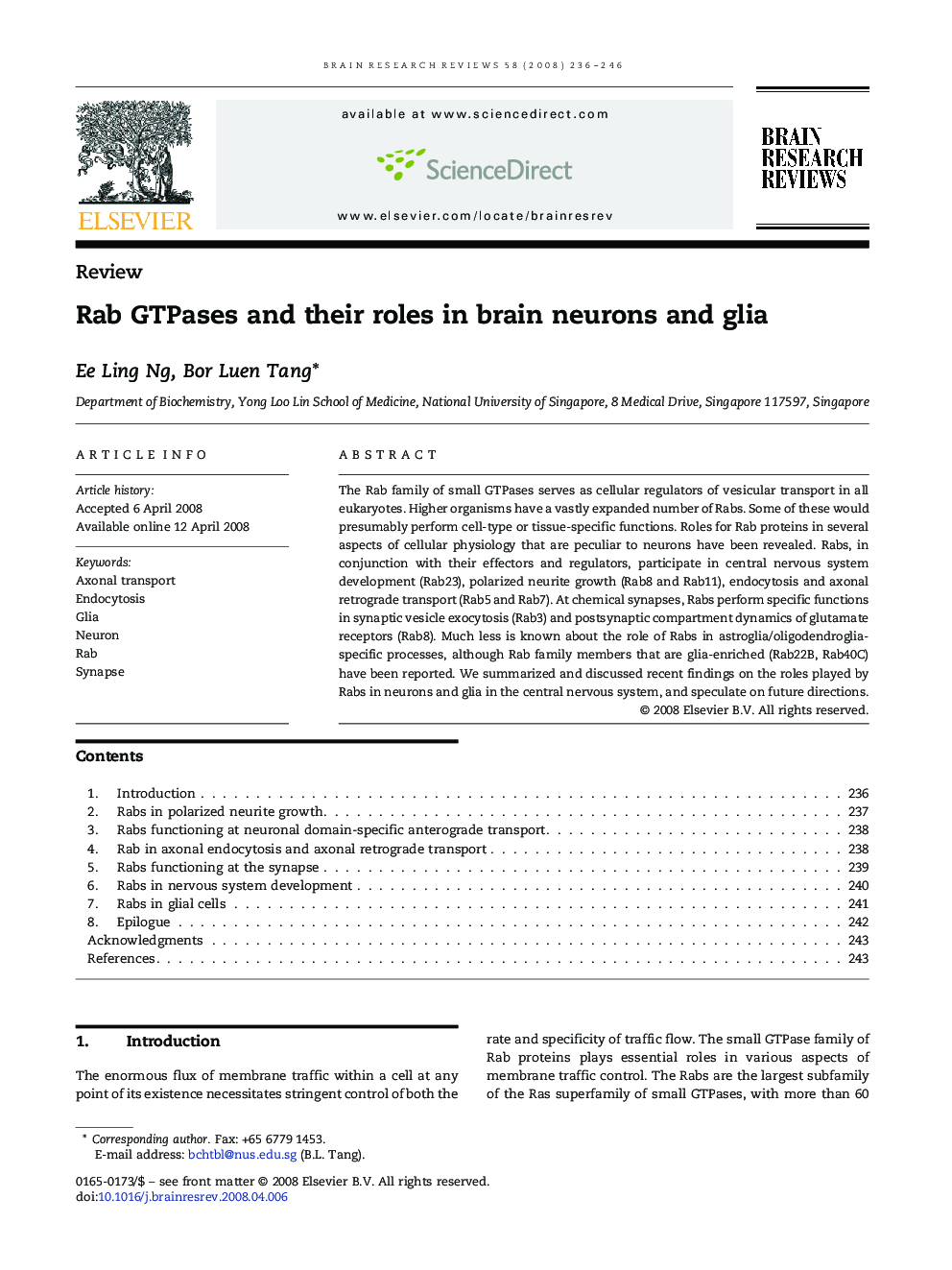| Article ID | Journal | Published Year | Pages | File Type |
|---|---|---|---|---|
| 4333764 | Brain Research Reviews | 2008 | 11 Pages |
The Rab family of small GTPases serves as cellular regulators of vesicular transport in all eukaryotes. Higher organisms have a vastly expanded number of Rabs. Some of these would presumably perform cell-type or tissue-specific functions. Roles for Rab proteins in several aspects of cellular physiology that are peculiar to neurons have been revealed. Rabs, in conjunction with their effectors and regulators, participate in central nervous system development (Rab23), polarized neurite growth (Rab8 and Rab11), endocytosis and axonal retrograde transport (Rab5 and Rab7). At chemical synapses, Rabs perform specific functions in synaptic vesicle exocytosis (Rab3) and postsynaptic compartment dynamics of glutamate receptors (Rab8). Much less is known about the role of Rabs in astroglia/oligodendroglia-specific processes, although Rab family members that are glia-enriched (Rab22B, Rab40C) have been reported. We summarized and discussed recent findings on the roles played by Rabs in neurons and glia in the central nervous system, and speculate on future directions.
